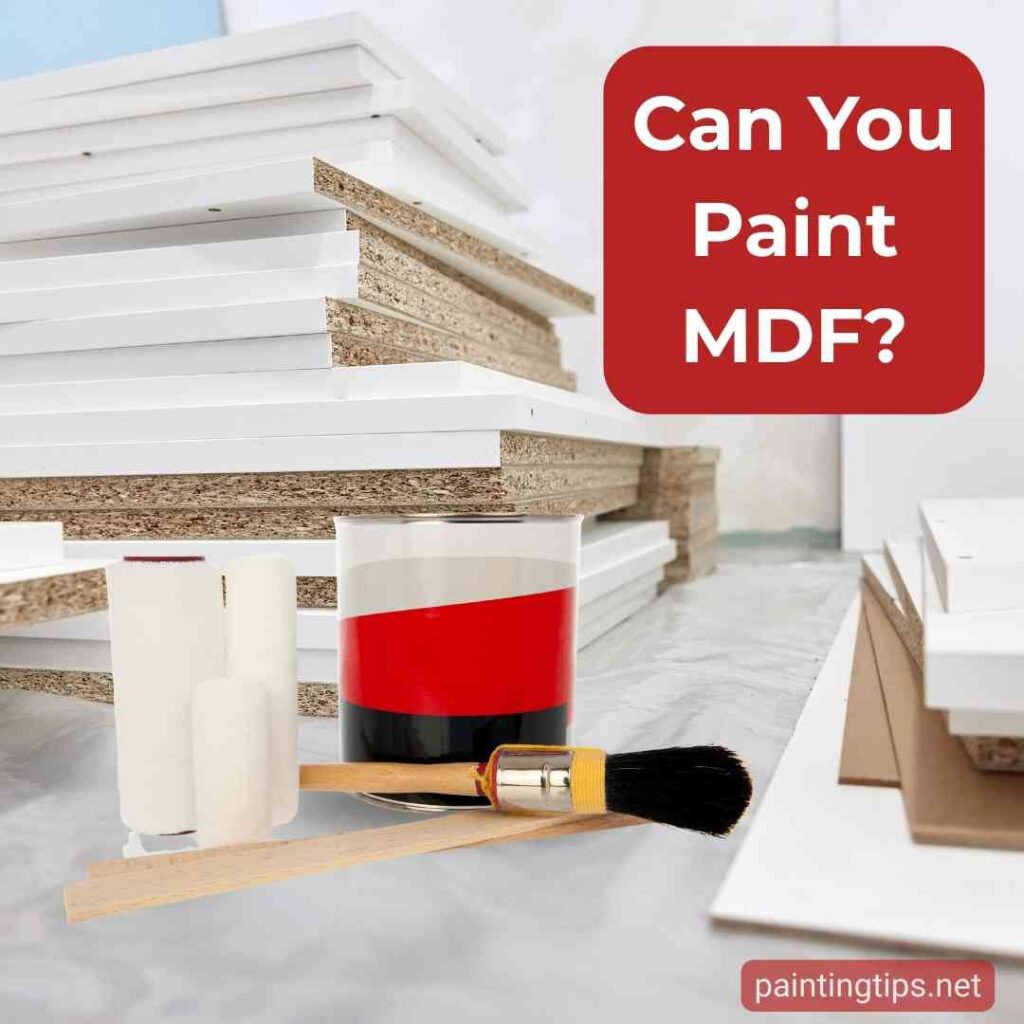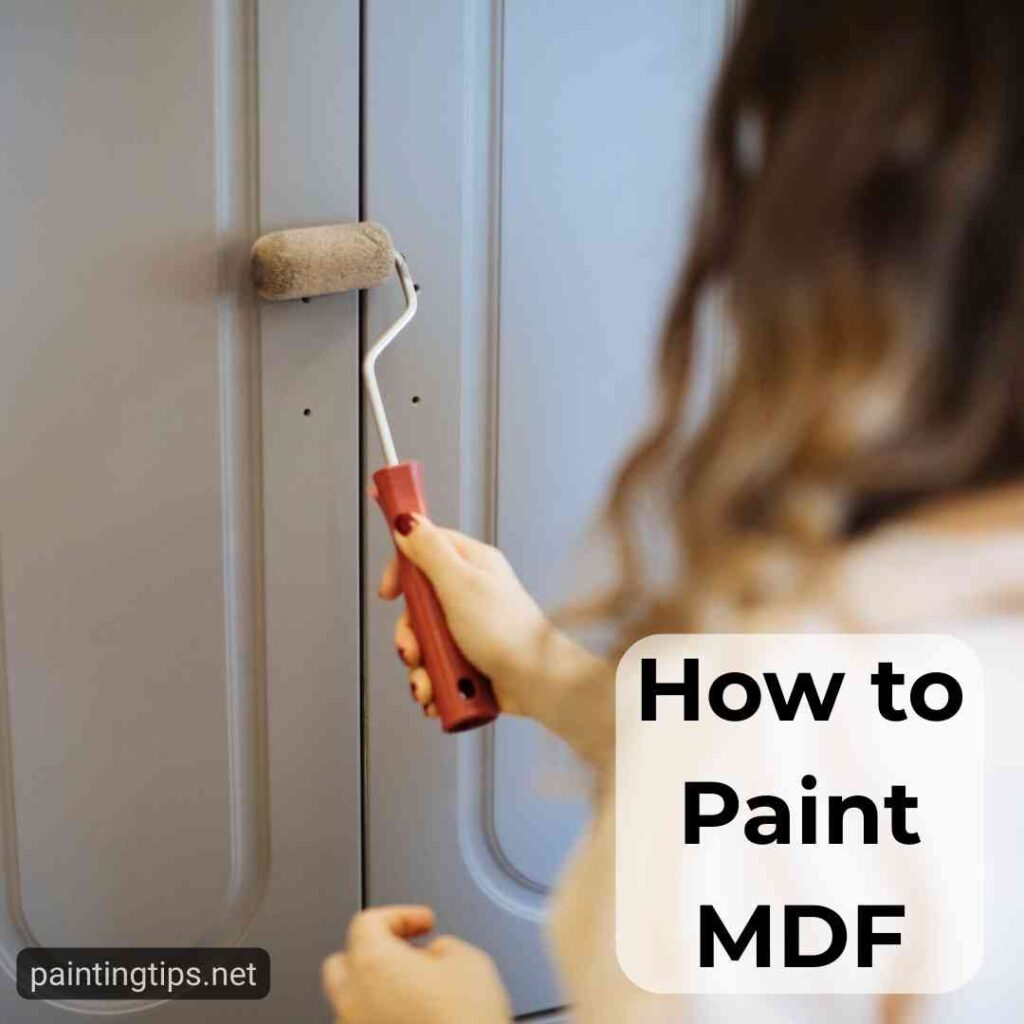Most furniture is made from MDF. This material is often covered with a laminated or melamine finish, making it water-resistant and smoother — but this coating also reduces paint adhesion. The bigger challenge, however, is painting raw MDF. Bare MDF is extremely absorbent and can soak up your paint quickly. That’s why you need to be careful whether you’re painting laminated or raw MDF. In this guide, we’ll cover how to paint both types — and also explain how to paint MDF without using a primer.
Can You Paint MDF?

Let’s start by clarifying what MDF is and whether it can be painted. MDF stands for Medium Density Fiberboard, a material made from wood fibers and resin, commonly used in furniture, cabinetry, and interior construction. Because of its fiber structure, raw MDF is highly absorbent. It’s often covered with a laminate or melamine coating to reduce this absorbency and improve durability.
The good news is — yes, you can paint MDF. However, it’s essential to properly prep the surface before painting. This is especially important for raw MDF, where primer plays a critical role. Without a primer, the MDF will absorb too much paint, causing uneven coverage and wasted materials.
What’s the Best Primer for MDF and Laminated MDF?
When painting bare MDF, a quality primer is essential to seal the surface and control absorption. The best primers for this are:
- Zinsser B-I-N Primer: A shellac-based primer that seals raw MDF effectively, dries fast, and performs well on edges and cut areas where absorption is highest.
- Kilz Premium High-Hide Stain Blocking Primer: A water-based option with excellent coverage that evens out the surface and sands smoothly between coats.
- Zinsser Bulls Eye 1-2-3 Primer: A versatile, water-based primer with low odor and reliable coverage, great for indoor MDF projects.
For laminated MDF or melamine surfaces, use a bonding primer since these surfaces are slick and non-porous. Recommended options include:
- INSL-X STIX Waterborne Bonding Primer: Ideal for laminate, melamine, glass, and tile. It has excellent adhesion and low VOC.
- Zinsser BONDZ Maximum Adhesion Primer: Formulated for glossy, non-porous surfaces like laminated MDF, PVC, and glass.
- Zinsser Bulls Eye 1-2-3 Primer: Can also work on laminated MDF after lightly sanding the surface.
Pro Tip: Always lightly sand laminated, melamine, or veneer MDF before priming to improve adhesion and prevent peeling.
What Kind of Paint Do You Use on MDF?
The best paints for MDF are high-quality acrylic latex paints or oil-based paints. Acrylic latex paint is the most popular option for interior furniture, cabinets, and trim. It’s water-based, dries fast, and cleans up easily. Choose a semi-gloss or satin finish for better durability and a smooth look.
Oil-based paint is a better option for high-moisture or heavy-use areas. It provides a hard, long-lasting finish with smooth coverage but takes longer to dry and has a stronger odor.
Pro Tips: Match your primer to your paint base. Use a water-based primer for acrylic latex paint and an oil-based primer for oil-based paint. Foam rollers or high-density brushes create the smoothest, streak-free finish on MDF. Also, matte or satin paints tend to show fewer roller marks on MDF surfaces.
How to Paint MDF

Let’s start with surface preparation and priming, the most important steps in painting MDF.
Step 1: Surface Preparation
Inspect the MDF for holes or cracks. Any imperfections will affect the finish. Fill them with wood filler or putty. Use water-based filler for water-based paint and oil-based filler for oil-based paint. Let water-based filler dry for about 3 hours and oil-based filler for 24 hours. Once dry, sand the surface with 200-grit sandpaper until smooth. Wipe away sanding dust with a damp cloth.
Step 2: Priming
Priming is the most crucial step, especially for raw MDF. A good primer reduces absorbency and improves paint adhesion. Apply multiple coats of primer to bare MDF if necessary. Let water-based primer dry for at least 5 hours and oil-based primer for 24 hours before moving to the next step.
Step 3: Sanding
If you’ve applied filler or if the MDF surface has imperfections, lightly sand after priming. For laminated MDF, light sanding makes the surface slightly rough, improving primer and paint adhesion.
Step 4: Painting
Once the primer is fully dry, apply the first coat of paint. Use a high-quality foam roller or a short-nap roller for flat surfaces. For detailed areas, use a 3-inch soft-bristle brush. Let the first coat dry — 5 hours for water-based paint, 24 hours for oil-based paint. Then, apply a second thin, even coat.
Step 5: Sealing (Optional)
If the painted MDF furniture will experience heavy use or frequent contact, consider applying a protective clear topcoat once the paint has fully cured. Choose a matte, satin, or gloss finish depending on your desired look. Keep in mind that varnish doesn’t adhere well to oil-based paint. “Related article: How to paint particle board.”
Things You Will Need:
- Wood filler (water-based or oil-based)
- 200-grit sandpaper
- Damp cloth
- Primer (based on your paint type)
- High-quality acrylic latex or oil-based paint
- Foam roller or short-nap roller
- 3-inch soft-bristle brush
- Optional: Clear topcoat or furniture varnish
Painting MDF Without Primer
The best way to paint MDF without using a primer is to thin the paint. Thinned paint is quickly absorbed by the MDF. Thin latex paint with 20% water and apply the first coat to the MDF surface. This will act as a primer. Then, apply the next coats directly onto the MDF without thinning, leaving a 5-hour drying time between each coat. If you don’t have a primer, you can paint MDF using this method.
If you’re planning to paint MDF with oil-based paint, thin the first coat with 20% synthetic thinner to paint without a primer. Apply the next coats without thinning and wait at least 24 hours between coats.